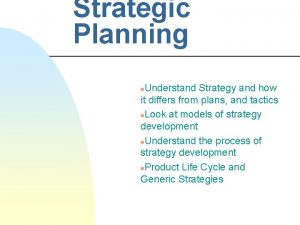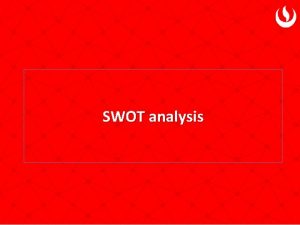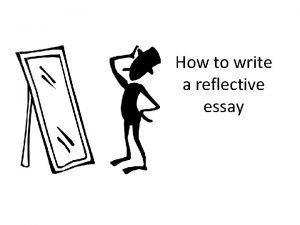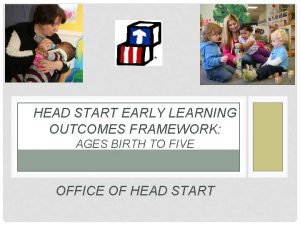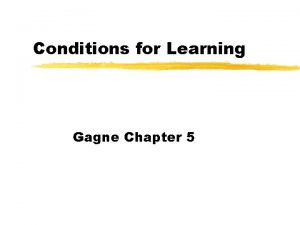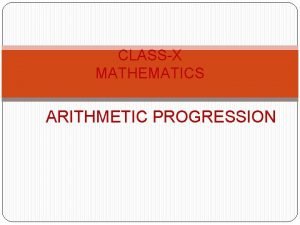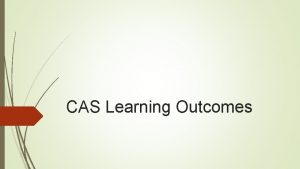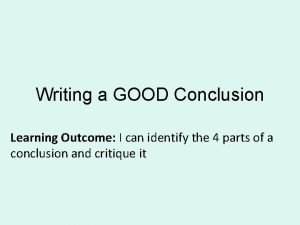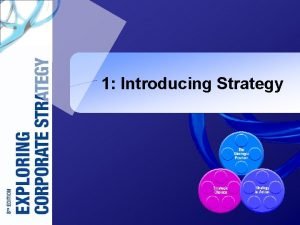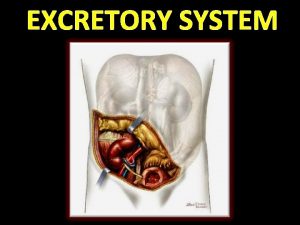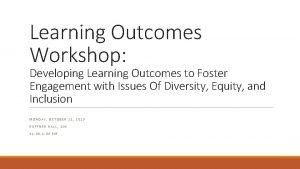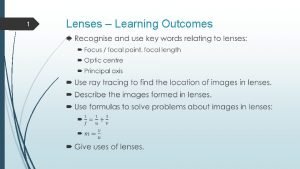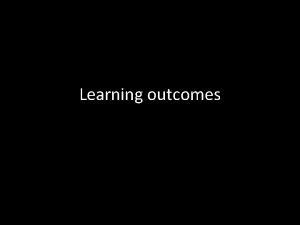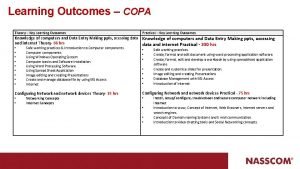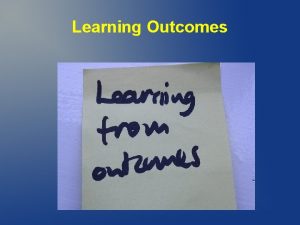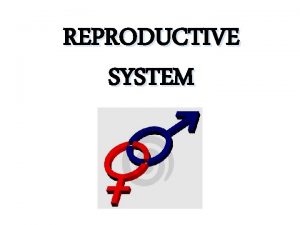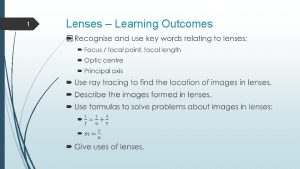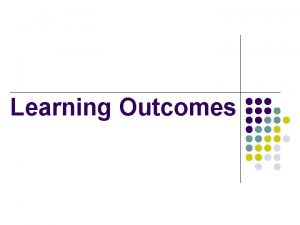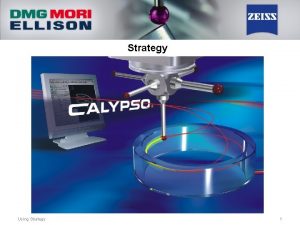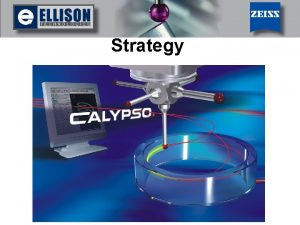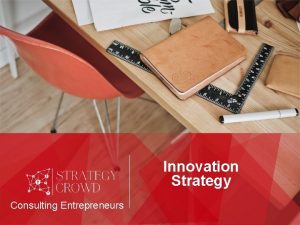INTRODUCTION TO STRATEGY Learning Outcomes 1 To understand
































- Slides: 32

INTRODUCTION TO STRATEGY

Learning Outcomes (1) To understand: 1. The basic concepts of strategy 2. The general characteristics of strategic decisions 3. How strategic priorities vary by level: corporate, business, and operational 4. The different approaches (prescriptive and emergent) to strategy:

Definition of Strategy by Henry Mintzberg : Strategy as a Plan: intended course of action • Made in advance of the actions • Are developed consciously and purposefully Example: When a country’s elections are held after x years

Definition of strategy by Henry Mintzberg : Strategy as a Ploy: As a maneuver to outwit an opponent or a competitor. • Think of Chess Example: Carrefour and Tuskys and Naivas

Definition of Strategy by Henry Mintzberg : Strategy as a Pattern: Strategy is consistency in behavior whether intended or not Find the picture that follows logically from the diagrams to the right. Please enter the missing figure: 13, 57, 911, 1315, 1719 2123

Definition of Strategy by Henry Mintzberg : Strategy as a Pattern: Strategy is consistency in behavior whether intended or not Example: • Strathmore, major curriculum review every 3 years • Since the past few years, Apple has consistently released major i. OS Updates every year around September

Definition of Strategy by Henry Mintzberg : Strategy as a Position: Where does the organization place itself in the market or environment. (what position do you take? ) • Niche, providing low cost or distinctive products, or by exploiting competences to deter others in the market • What do you do to make yourself unique?

Definition of strategy by Henry Mintzberg : Strategy as a Perspective • Strategy as a perspective suggests that strategy is a concept and the implication is that all strategies exist only in the minds of interested parties. • Example: An organization that encourages risk-taking and innovation might focus on coming up with innovative products.

Individual Exercise • Looking at the 5 strategy definitions, where are they currently being used in today’s businesses/ organizations/ situation?

Characteristics of strategy 1. 2. 3. 4. 5. It is about being different, Being in a competitive position, Defining the business purpose and scope of activities. Achieving long-term goals and objectives. Seeking to match activities of the firm with its environment. 6. Seeking to match activities of firm with its resources. 7. Obtaining and allocating resources now and in the future. 8. Maximizing value creation from available resources. With the above characteristics, students to coin definition of strategy

Definition of strategy Strategy is the direction and scope of an organisation over the long term, which achieves advantage in a changing environment through its configuration of resources and competences with the aim of fulfilling stakeholder expectations.

Levels of strategy 1. Corporate level: concerned with the overall purpose and scope of an organisation and how value will be added to the different parts (business units) of the organisation 2. Business unit level: how does an organization approach a particular product or market? 3. Functional or departmental level: It is the level of the operating divisions and departments.


Vocabulary/ ‘Derivative’ of strategy

Class Exercise Students to coin their: 1. Mission 2. Vision Put students in breakout rooms to discuss this. 5 students per group 3. Goal 4. Objective 5. Strategic capability 6. Strategies 15 minutes

STRATEGIC MANAGEMENT It includes understanding the strategic position of an organization, strategic choices for the future and turning strategy into action

STRATEGIC MANAGEMENT It includes understanding the strategic position of an organization, strategic choices for the future and turning strategy into action

STRATEGIC MANAGEMENT: Position

STRATEGIC MANAGEMENT: Choice

STRATEGIC MANAGEMENT: Implementation

Individual Exercise • Yahoo!’s peanut butter manifesto page 15 of 620

STRATEGIC DEVELOPMENT PROCESSES • Strategy development processes are the ways in which strategy develops in organizations. • Need to look at the three lenses

STRATEGY LENSES • The strategy lenses are three different ways of looking at the issues of strategy development for an organization • It includes: i. Strategy as design ii. Strategy as experience iii. Strategy as ideas

STRATEGY LENSES: Strategy as design • Deliberate positioning of the organization through a rational, analytic, structured and directive process • You evaluate the environment, resources, get a clear direction, then…. . you design the strategy • Managers are, or should be, rational decision makers. True or false Discuss the advantages and disadvantages

STRATEGY LENSES: Strategy as experience • Strategy is based on experiences gained from past strategies. • There is strong influence from the received wisdom and culture within an organization about how things should be done. Discuss the advantages and disadvantages

STRATEGY LENSES: Strategy as ideas • It emphasis innovation and the need for diversity of ideas in the organizations. • New ideas will often be created throughout a diverse organization as people try to carry out their everyday jobs and to cope with changing circumstances. https: //www. standardmedia. co. ke/article/2001355021/strange-ideasthat-made-millionaires Discuss the advantages and disadvantages

Class Exercise Students to discuss what strategy lens stood out during their internship

The Strategy Lenses • Strategy as design • Logical analytical process • Planned implementation • Top manager driven • Strategy as experience • Adaptation of past strategies based on experience • Influenced by taken for granted assumptions (culture) • Bargaining and negotiation • Strategy as ideas • Importance of variety and diversity for innovation • Emergent strategy from within and around the organisation • Top managers create the conditions for this to take place • Strategy as Discourse • This lens sees strategy in terms of language, recognising that managers spend most of their time communicating – based on power, influence, making strategic proposals and debating issues.

STRATEGY LENSES: Summary

STRATEGY DRIFT • Where strategies progressively fail to address the strategic position of the organization and performance deteriorates.

CLOSING CASE: Electrolux page 36 To be discussed in the next class

 To understand recursion you must understand recursion
To understand recursion you must understand recursion Generic strategies examples
Generic strategies examples Expected outcome example
Expected outcome example Water cycle learning outcomes
Water cycle learning outcomes Learning objectives for notice writing
Learning objectives for notice writing Swot analysys
Swot analysys Learning outcomes of rhymes
Learning outcomes of rhymes Example of learning objectives
Example of learning objectives Photolysis in photosynthesis
Photolysis in photosynthesis Learning outcomes of nutrition in plants
Learning outcomes of nutrition in plants Domain 6 community linkages explanation
Domain 6 community linkages explanation Learning outcomes of linear equations in one variable
Learning outcomes of linear equations in one variable Learning outcomes generator
Learning outcomes generator Objectives of teaching direct and indirect speech
Objectives of teaching direct and indirect speech Purpose of learning outcomes
Purpose of learning outcomes Purpose of output devices
Purpose of output devices Ib psychology learning outcomes
Ib psychology learning outcomes Reflective essay on learning outcomes
Reflective essay on learning outcomes Learning outcomes of holy week
Learning outcomes of holy week Holy week learning outcomes
Holy week learning outcomes Head start early learning outcomes framework
Head start early learning outcomes framework Learning objectives of fruits
Learning objectives of fruits Gagne learning outcomes
Gagne learning outcomes Arithmetic progression conclusion
Arithmetic progression conclusion Where did ravi hide the kitten?
Where did ravi hide the kitten? Sound energy definition
Sound energy definition Learning objectives of profit and loss
Learning objectives of profit and loss Cooking learning outcomes
Cooking learning outcomes Philippine standards for teachers
Philippine standards for teachers Novorapid sliding scale
Novorapid sliding scale Learning outcomes of work and energy
Learning outcomes of work and energy Cas learning outcomes
Cas learning outcomes Conclusion of learning outcomes
Conclusion of learning outcomes

